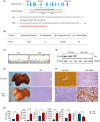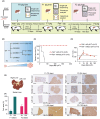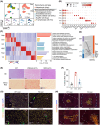Achieving scalable expansion of therapeutic porcine hepatocytes in vivo through serial transplantation
- PMID: 40586425
- PMCID: PMC12431570
- DOI: 10.1002/ame2.70052
Achieving scalable expansion of therapeutic porcine hepatocytes in vivo through serial transplantation
Abstract
The clinical application of hepatocyte transplantation has been significantly hindered by the scarcity of primary hepatocytes and the functional immaturity of in vitro-produced hepatocytes. By performing serial allogeneic hepatocyte transplantation in CRISPR/Cas9-mediated Fah-knockout pigs, we successfully achieved large-scale expansion of hepatocytes while maintaining their authentic biological characteristics. Particularly, the established model enables sustained in vivo liver reconstruction, concurrently ameliorating hepatic fibrosis and demonstrating functional microenvironmental remodeling. Moreover, through comprehensive single-cell transcriptomic profiling of 52 418 hepatocytes across transplant generations (F0-F2), we discovered that the cellular composition of these transplanted hepatocytes is similar to that of wild-type hepatocytes. The regenerated liver exhibits all six major hepatic cell types identical to the wild-type counterparts, with the characteristic lobular zonation patterns well preserved. Our research provides valuable insights into the large-scale expansion of physiologically functional hepatocytes in vivo without compromising their biological properties. This finding holds great promise for advancing the clinical application of human hepatocyte transplantation, potentially offering more effective treatment options for patients with liver diseases.
Keywords: cellular therapy; hepatocyte; large‐scale expansion; regeneration; single‐cell RNA sequencing.
© 2025 The Author(s). Animal Models and Experimental Medicine published by John Wiley & Sons Australia, Ltd on behalf of The Chinese Association for Laboratory Animal Sciences.
Conflict of interest statement
All authors declare that they have no conflict of interest.
Figures



References
MeSH terms
Grants and funding
- 2021YFA0805905/National Key Research and Development Program of China
- 2023YFC3404305/National Key Research and Development Program of China
- 2024YFA1107900/National Key Research and Development Program of China
- XDB1150000/the Strategic Priority Research Program of the Chinese Academy of Sciences
- YSBR-012/the CAS Project for Young Scientists in Basic Research
LinkOut - more resources
Full Text Sources
Miscellaneous

